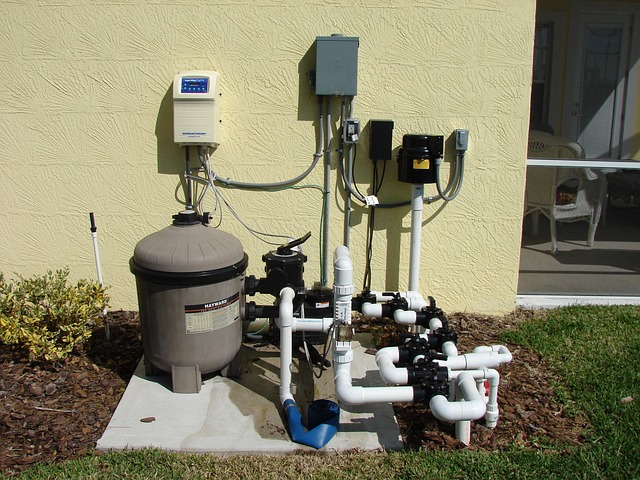Water storage tanks provide solutions for water storage
Water storage tanks offer practical solutions for collecting, storing, and preserving water for various applications. Whether used in residential, commercial, agricultural, or industrial settings, these containers play a crucial role in water management strategies worldwide. From ensuring water availability during shortages to supporting sustainable water conservation efforts, storage tanks have become essential infrastructure components for many properties and facilities.

Whether you’re looking to ensure water availability during droughts, reduce reliance on municipal systems, or support agricultural operations, water storage tanks deliver practical solutions. These versatile systems come in numerous configurations, materials, and capacities to meet diverse requirements. From small household backup systems to large-scale industrial installations, water storage tanks address critical water management challenges across multiple sectors.
What Are the Main Types of Water Storage Tanks?
Water storage tanks are categorized based on their installation method and design. Above-ground tanks sit on the surface and offer easy installation and maintenance access. They’re commonly used for residential and agricultural applications where space permits. Underground tanks are buried beneath the surface, saving space and protecting water from temperature fluctuations and sunlight exposure. Elevated tanks use gravity to maintain water pressure in distribution systems, making them popular for municipal water supplies and rural properties. Bladder tanks provide flexible storage solutions that can be deployed temporarily or in remote locations. Each type serves specific purposes depending on available space, budget constraints, and intended applications.
Which Water Tank Material Options Work Best?
The material selection significantly impacts tank durability, water quality, and maintenance requirements. Polyethylene plastic tanks are lightweight, affordable, and resistant to corrosion, making them ideal for residential use. Fiberglass tanks offer excellent durability and UV resistance while maintaining relatively light weight. Steel tanks, often coated or lined, provide robust solutions for large-scale storage but require regular maintenance to prevent rust. Concrete tanks excel in underground installations and large capacity applications, offering exceptional longevity when properly constructed. Stainless steel tanks deliver premium performance for potable water storage with minimal maintenance needs. Each material presents unique advantages regarding cost, lifespan, and suitability for specific water quality requirements.
How Do You Approach Installing and Maintaining Water Storage Tanks?
Proper installation begins with site assessment and preparation. The foundation must support the tank’s full weight, accounting for water density and structural requirements. Level surfaces prevent stress concentrations that could lead to tank failure. Installation typically involves positioning the tank, connecting inlet and outlet piping, installing overflow systems, and ensuring proper venting. For underground tanks, excavation depth, backfill material, and load-bearing considerations become critical factors.
Maintenance schedules depend on tank type and water source. Regular inspections should check for leaks, cracks, and structural integrity. Cleaning intervals vary from annual to every few years, depending on water quality and usage patterns. Sediment removal prevents contamination and maintains capacity. Checking seals, gaskets, and connections ensures system integrity. For potable water systems, periodic water quality testing verifies safety standards. Preventive maintenance extends tank lifespan and protects water quality, making it a worthwhile investment for any water storage system.
What Are Common Water Storage Tank Applications?
Water storage tanks serve diverse purposes across multiple sectors. Residential applications include emergency water supplies, rainwater harvesting systems, and well water storage. Homeowners use these tanks to ensure water availability during outages and reduce municipal water consumption. Agricultural operations depend on storage tanks for irrigation systems, livestock watering, and crop spraying operations. The ability to store water during wet periods for use during dry seasons proves essential for farm productivity.
Commercial and industrial facilities utilize storage tanks for process water, fire suppression systems, and operational backup. Manufacturing plants, food processing facilities, and chemical operations require consistent water supplies for production continuity. Municipal water systems employ large elevated and ground-level tanks to balance supply and demand, maintain pressure, and provide emergency reserves. Remote locations and off-grid properties rely on storage tanks as primary water sources when municipal connections are unavailable.
How Do You Determine Sizing and Capacity Considerations?
Calculating appropriate tank capacity requires analyzing daily water consumption, intended uses, and available space. Residential systems typically range from 500 to 10,000 gallons, with household size and usage patterns driving capacity decisions. A family of four consuming 300 gallons daily might select a 1,500-gallon tank for a five-day emergency supply. Agricultural needs vary dramatically based on acreage, crop types, and irrigation methods, with capacities ranging from thousands to millions of gallons.
Consider peak demand periods when sizing tanks. Irrigation systems may require large volumes during growing seasons, while fire suppression systems need sufficient capacity to meet code requirements. Available footprint influences tank dimensions, as vertical tanks occupy less ground space than horizontal configurations. Budget constraints often balance ideal capacity against practical limitations. Planning for future expansion helps avoid undersizing that necessitates costly upgrades. Professional consultation ensures accurate sizing that meets both current needs and anticipated growth.
Conclusion
Water storage tanks provide essential solutions for managing water resources across residential, agricultural, commercial, and industrial applications. Selecting appropriate tank types, materials, and capacities depends on specific requirements, site conditions, and budget considerations. Proper installation and regular maintenance ensure reliable performance and water quality over extended service lives. Whether storing rainwater, well water, or municipal supplies, these systems offer independence, emergency preparedness, and operational flexibility. Understanding the various options and considerations empowers property owners to implement effective water storage solutions that meet their unique needs while supporting sustainable water management practices.




